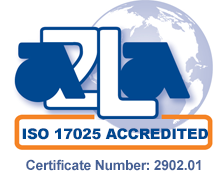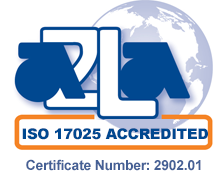Why is it important to calibrate my pipettes?
The humble pipette is one of the most frequently used instruments in the lab. They’re used for everything from the simplest laboratory tasks to extremely sensitive quantitative assays. Keeping on top of your pipette calibration ensures that your results are accurate, reliable, and repeatable, and scheduling routine preventative maintenance with your calibration greatly extends the longevity of your instruments.
How often should I get my pipettes calibrated?
The answer to this question will vary greatly based on your level of research, frequency of pipette usage, and your lab’s specific regulations (CLIA, GLP/GMP, ISO, etc.). For most unregulated labs with moderate pipette usage, scheduling an annual pipette calibration with preventative maintenance will suffice. If your lab is highly regulated, your calibration cycle will depend on the requirements of your specific auditing body and your lab’s SOP’s.
What type of pipette calibration do I need?
If you work in an unregulated lab and are looking for basic pipette calibration, we recommend choosing a standard calibration package that comes with preventative maintenance, which typically includes full disassembly of your pipette for internal and external cleaning, piston re-greasing, and replacement of worn internal seals and O-rings. This will keep your pipette in optimal condition and prolong its lifetime.
If you work in a more highly regulated lab, then your lab might need a combination of the following:
“As Found” Data: This type of data is collected by the calibration technician in the condition your pipette is received in, as opposed to “as left” data, which is taken after your pipette is cleaned and has had maintenance performed on it. “As found” data is important for any scientists who would benefit from knowing whether their pipette was performing accurately in the period of time between when it was last serviced and leading up to their next scheduled pipette calibration. This information can help scientists assess whether past experimental results are reliable or need to be analyzed differently due to variance in pipette performance.
Per Channel Pipette Calibration for Multichannel Pipettes:
Many scientists are not aware of the industry standard for how multichannel pipettes are calibrated. When you order standard calibration service for your multichannel pipette, the technician will draw up liquid in all channels at once, and perform the readings as an average of all channels together, rather than calibrating each channel independent of the others. This means that small inconsistencies among the channels may not be detected. If you are working with many samples at once, such as on a 96- or 384-well plate, and you are running a sensitive assay that requires high accuracy throughout your plate, we recommend ordering per channel calibration for your multichannel pipettes. This is performed exactly as it sounds; the technician will take readings for each individual channel, making sure each one is within calibration.
Extended and Midpoint Readings:
Some labs have regulations that require more data to be collected than what is included in a standard pipette calibration. Extended readings (e.g., 10 x 2) provide a greater sample size and a more accurate representation of the average, which is used to determine if your pipette is within calibration. A 3rd or midpoint reading can also be taken in between the low and high ends of the volume range of your pipette to ensure it is performing accurately throughout its range.
GLP/GMP Calibration Reports:
Some pipette calibration providers also have reports specifically designed for GLP and GMP labs. These reports can contain much more data than a standard calibration report, such as the results of each individual reading for a specific pipette, information about the scale used for the calibration, and a QC signature from the calibration technician.
We’ve been in the pipette calibration business for over 20 years, so we know a thing or two. Contact us to schedule your next pipette calibration!



